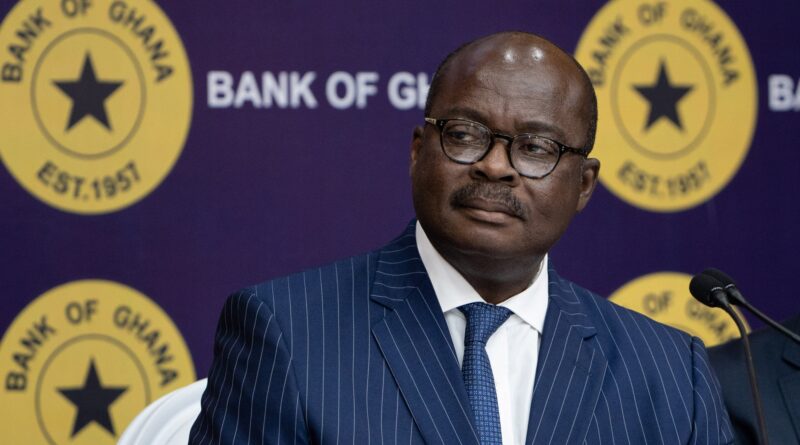Banks’ Non-Performing Loans Rise to 21.8% – Bank of Ghana
Despite continued profitability and strong liquidity in Ghana’s banking sector, non-performing loans (NPLs) have increased to 21.8% as of December 2024, compared to 20.6% in December 2023, according to Dr. Ernest Addison, Governor of the Bank of Ghana (BoG).
Speaking at the 122nd Monetary Policy Committee (MPC) press conference held at the newly built Bank of Ghana headquarters in Accra on Monday, January 27, Dr. Addison highlighted that the Capital Adequacy Ratio (CAR) without reliefs improved to 11.3% in December 2024, up from 8.3% the previous year. With reliefs, the CAR edged up slightly to 14%, compared to 13.9% in December 2023.
CAR is a critical indicator used to measure a bank’s ability to meet its financial obligations.
While the banking sector has shown resilience, the pace of profit growth slowed in 2024. Dr. Addison emphasized that elevated credit risks remain a significant concern for the industry. NPLs, which represent loans in default due to missed payments over a specified period, continue to pose challenges to stability.
The banking sector’s assets grew by an impressive 33.8% in 2024, supported by improving domestic macroeconomic conditions. However, Dr. Addison stressed the need for intensified supervision to ensure banks address high NPL levels and adhere to recapitalization plans to strengthen solvency.
Monetary Policy and Inflation Outlook
The MPC decided to maintain the policy rate at 27%, citing improvements in global economic conditions and easing inflationary pressures in advanced economies. Dr. Addison noted that global monetary policies have become more accommodative, leading to improved investor sentiment toward emerging markets like Ghana.
Domestically, inflation remained elevated in 2024, largely driven by rising food prices. Climate-related factors such as delayed rainfall and a dry spell in key agricultural regions negatively impacted food production. Supply chain disruptions further exacerbated the situation.
Despite these challenges, the BoG’s latest inflation forecast suggests a gradual decline, with a return to the medium-term target of 8±2% over an extended time horizon. Fiscal consolidation under the new administration’s economic policies, along with the upcoming 2025 budget, is expected to aid the disinflation process.
External Sector Performance
Dr. Addison reported strong external sector performance, driven by robust growth in gold exports, which significantly contributed to economic growth and exchange rate stability. Favorable commodity prices and improved production are expected to sustain the external sector’s positive trajectory, although risks such as energy sector challenges must be closely monitored.
The stronger-than-expected economic growth and improved macroeconomic environment have also benefited the banking sector. These conditions are expected to enhance the debt-servicing capacity of households and businesses, helping to curb further increases in NPLs.
In conclusion, the Bank of Ghana remains committed to ensuring stability in the banking sector by addressing credit risks, monitoring inflation trends, and promoting economic resilience through sound fiscal and monetary policies.
